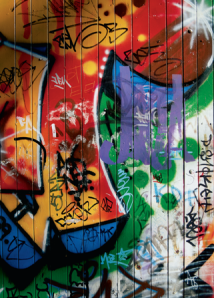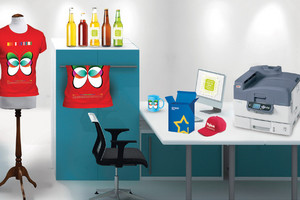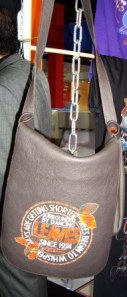With people around the world celebrating Holi, the Festival of Colours this month, see below for some tips on how to make the most informed decision in your choice of colour printer; for whatever size of business you are in.
In the print industry, cyan, magenta, yellow and black are used as the primary colours. Most printers use the CMYK colour model.
CMYK refers to the four inks used in most colour printers: cyan, magenta, yellow, and key (black). The “K” in CMYK stands for key since in four-colour printing cyan, magenta, and yellow printing plates are carefully keyed or aligned with the key of the black key plate. Some sources suggest that the “K” in CMYK comes from the last letter in “black” and was chosen because B already means blue. However, this explanation is incorrect. Of course, as most of you know, OKI was the first to bring out CMYW for white toner based printing.
We once lived in a blac k and white world. TV was black, printed publications were predominantly black. All of that changed in the 60’s and has created a chain reaction that holds true today. Less than ten years ago, in-house colour printing was still an expensive hobby. Today, businesses in the Middle East are using printers that produce their colour documents quickly, consistently and cost-effectively and are hence able to communicate more effectively with their own customers.
k and white world. TV was black, printed publications were predominantly black. All of that changed in the 60’s and has created a chain reaction that holds true today. Less than ten years ago, in-house colour printing was still an expensive hobby. Today, businesses in the Middle East are using printers that produce their colour documents quickly, consistently and cost-effectively and are hence able to communicate more effectively with their own customers.
Studies in a major publication revealed that the use of colour increased readership by 40% or more. A university study showed a 65% increase in the retention of material when full colour was used instead of black and white.
Some businesses are perhaps put off by using colour in their printed documents as it creates a dent in their budgets. This is a misconception. Using colour is not as expensive as you may think. If you need the highest-quality colour pages-say you print out presentations and brochures or you’re an organization who needs top-notch flyers-spending the extra cash for a colour toner based printer makes sense. These printers give you the cleanest and sharpest results. Also, toner based printers print out long documents quickly, at roughly twice the text speed of typical ink jets.
Whether your printer costs $40 or $400, the purchase price is only the first item on your new list of ongoing printing expenses. Over time, buying the consumables or toner and acquiring media (paper, envelopes, card or transparencies) will very likely make a far bigger impact on your wallet. These costs will vary depending on what you print, how much you print, and what kind of media you use.
Shaving cents off colour printing involves just a little thought, effort, and advance planning. It is a bigger issue than many companies think. With a set of replacement ink cartridges for inkjet printers costing anything up to $55 a time, an office of 20 ‘heavy’ users could be spending over $1,000 a month on ink!
- Know Before You Buy – Saving money on printing starts (ideally) before you buy the printer. Before you begin researching new models, make sure that you’ll be getting the best printer for the types of documents you plan to produce. Once you start looking at specific models, make a point of checking the recommended print volume; if you typically print 100 pages a day, for example, don’t buy a printer that’s rated for 500 pages a month.
- If you do a lot of document printing, don’t use an inkjet printer. Use a toner based printer. Toner based printers cost more to buy but much less to use. With all costs figured in, each document page printed on a typical toner based printer costs from 2 cents to 5 cents; on an inkjet, the cost per page can run from 10 cents to 15 cents, depending on the model. This does not even count the cost of photo printing, which can cost up to a dollar per page on an inkjet when you include the high cost of photo paper and the additional ink that’s used in that mode.
- Know your hidden costs – Choose a printer not only on the basis of its performance and speed but on the cost of the consumables and not on the cost of the printer. Ink costs swallow up all other expenses over a couple of years of use. Even machines using similar technologies can have very different operating and consumables costs. Evaluating the ongoing costs of a printer can produce some surprising results.
- Don’t judge a cartridge by price alone; its efficiency, or page yield—the number of pages it can print–matters just as much. Of course, that figure will vary depending on how much ink you use on a page, but the industry standard assumption is 5 percent coverage per page for each colour. Some companies make yield information available on the Web along with other printer specifications; others will provide it if you ask, either by email or phone. You can use yield information to calculate per-page costs, which can be useful in determining what your printing costs for different printers would look like over time. Toner based printer toner cartridges may cost a lot more than ink jet cartridges, but their higher yields make per-page costs lower.
- The incredible shrunken ‘starter’ cartridge – Many lower-cost toner based printers come with starter cartridges that last anywhere from 60 percent to as little as 33 percent as long as a regular cartridge. Granted, if you don’t print much, that first cartridge could last you a while; but if you know you’ll be printing at least 100 pages per month, either find a printer that comes with a full-size cartridge or factor in the cost of an early replacement. Of course, if you get a great deal on the printer, your overall cost may still be quite affordable.
- Using standard paper for the job – The heavier, brighter (whiter), or more specialized the paper is, the more it will cost. You’ll generally pay as little as a half-cent per page for typical, 80gsm office paper, or as much as a dollar for an A4 sheet of glossy photo paper. Save the pricey stuff for final prints; for everything else, use decent quality standard copier paper. It will affect the print quality from your toner based printer minimally, if at all.
- Print using “Draft” mode whenever possible – This won’t help when printing photos, but can save a lot of money over two or three years when you print everyday documents.
Do you have any tips on choosing a printer for your office? Let us know!
Filed under: Business Efficiency, Colours, Tips | Tagged: Business Efficiency, Colour printing, Colour Psychology, Festival of colour, Holi festival, how to buy printers, In-house printing, OKI, Oki colour printers, printing cost, SMB | Leave a comment »



















